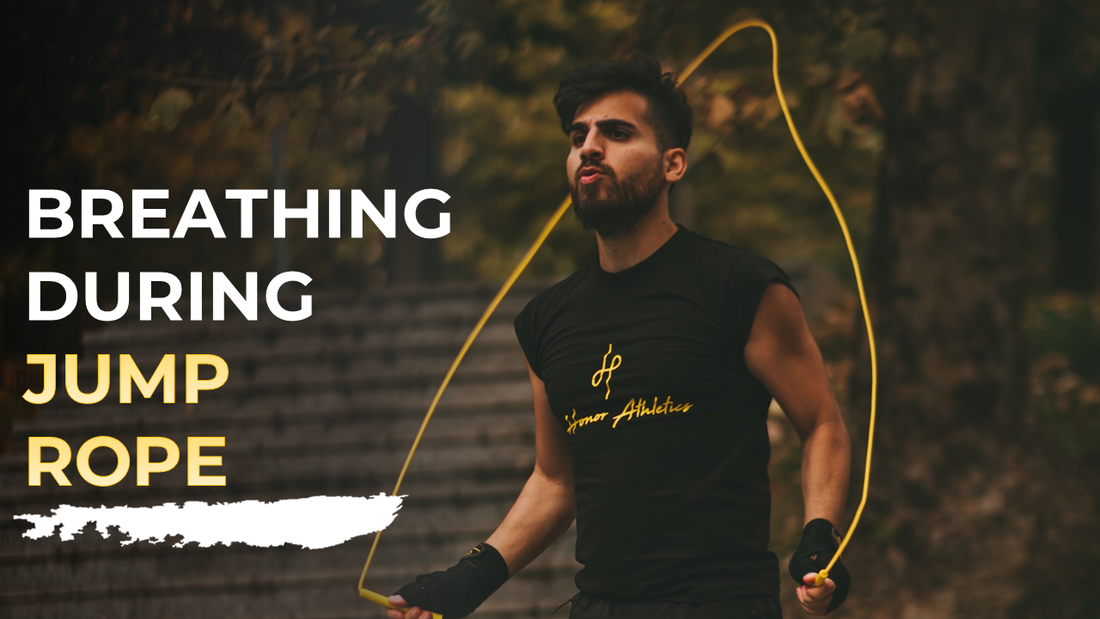
Breathing may seem like an automatic function, but when it comes to breathing while jumping rope, how you breathe can have a significant impact on your performance. Optimal breathing while jumping rope not only increases endurance and strength, but it also helps prevent fatigue and enhances your workout.
In this article, we will examine the importance of proper breathing and the necessary techniques while jumping rope.
Why is it important to breathe properly during exercise?
Although breathing is an unconscious activity, learning to control it can improve your physical performance, especially in activities like jumping rope. There are several important benefits to breathing properly while exercising:
- Increased core stability – Engaging your diaphragm and abdominal muscles while breathing can help stabilize your core, providing better balance and posture during jumps.
- Improved relaxation – Proper breathing reduces anxiety and mental stress by promoting a state of calm, which is crucial for maintaining focus during intense exercise.
- Better oxygen delivery – Deep, controlled breathing increases oxygen exchange, helping your muscles work more efficiently and delaying fatigue.
- Improved cardiovascular function – Slower, deeper breaths lower your heart rate, which can help you sustain longer, more intense rope jumping sessions.
Mastering breathing techniques will help you get more out of each workout, increasing both your performance and endurance.
If you are new to rope jumping, check out this article .
Diaphragmatic Breathing
Diaphragmatic breathing is essential for optimal breathing. This method involves taking deep breaths that engage the diaphragm and fill the lungs, rather than shallow chest breathing. Diaphragmatic breathing helps oxygenate your blood more efficiently and reduces unnecessary tension in the upper body.
To practice diaphragmatic breathing:
- Sit or lie down comfortably – Place one hand on your chest and the other on your stomach.
- Take a deep breath through your nose – Your belly should rise as you inhale, while your chest should remain relatively still.
- Exhale through your mouth – As you exhale, your belly should drop down as you relax your shoulders and neck muscles.
By practicing this technique for 5-10 minutes several times a day, you will train your body to breathe deeply and effectively, even during more intense activities such as jumping rope.
How to Breathe While Jumping Rope
Once you've mastered diaphragmatic breathing, the next step is to apply it to your jump rope routine. Breathing properly while jumping rope not only helps with endurance, but it also prevents shortness of breath and dizziness that can hinder your performance.
Here are some tips to optimize your breathing during your rope jumping sessions:
- Maintain good posture – Keeping your chest open, shoulders back and spine aligned allows your lungs to expand better, making it easier to breathe deeply.
- Synchronize your breathing with your jumps – To regulate your breathing, try to coordinate it with your jumping rhythm. A common pattern is to inhale for four jumps, then exhale for the next four. This synchronization helps maintain a steady breathing rate and prevents hyperventilation.
- Inhale through your nose, exhale through your mouth – Breathing through your nose provides better control and prevents you from taking shallow, rapid breaths. Exhaling through your mouth helps you release air more efficiently and keeps your breathing cycle smooth.
- Avoid shallow breathing – Shallow, rapid breaths can lead to carbon dioxide buildup and reduce oxygen delivery to your muscles. Focus on slower, deeper breaths to maximize air exchange and keep your heart rate steady.
6-2-8 Breathing Technique
The 6-2-8 method is a great technique for those looking to further increase their breathing efficiency during and after exercise. This breathing pattern helps regulate heart rate, reduce stress levels, and oxygenate your muscles more effectively.
Here's how to do it:
- Breathe for 6 seconds : Take a deep breath through your nose and fill your lungs completely.
- Wait 2 seconds : This pause gives time for oxygen to saturate your blood.
- Exhale for 8 seconds : Slowly release the air through your mouth, making sure to exhale fully.
Takeaway message
Mastering proper breathing techniques while jumping rope can make a significant difference in your performance and endurance. By practicing diaphragmatic breathing and synchronizing your breathing with your jumps, you will increase your oxygen efficiency and reduce fatigue.
Remember, breathing is as important as the physical movements in your rope jumping routine, so take the time to develop these techniques for better results.
Prev post

Crosses and Double Unders – Which Burns More Energy?
Updated on 09 December 2024
Next post

5 Jump Rope Tricks Anyone Can Master
Updated on 09 December 2024



